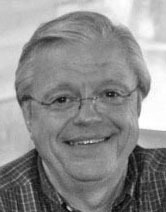“Sooner or later, everything old is new again.” — Stephen King
Marveling at the things my grandparents must have seen in their lifetime was something I often did when I was much younger.
Having reached that “grandparent” stage, I find myself drawing similar conclusions about my own life, including how much has changed and what I’ve seen survive to live another day. Dad’s father was born in 1888. We gathered at Rose Hill Cemetery in Pittsburg to celebrate his life during my second year of college. That marked a time when the whole world was still new to me.
My grandfather went to work at 13. Child labor was common then. Ten percent of girls between the ages of 10 and 15, and 20% of boys, had jobs to help support the family. The internal-combustion engine was gaining popularity, and mass production of powered buggies called “automobiles” was catching on. But only the wealthy could afford one.
Connecticut became the first state to pass a speed limit, limiting motor vehicles to 12 mph in cities and 15 mph on country roads.
My grandmother lived until October 1993. The Wright Brothers flew one of the first airplanes at Kitty Hawk, North Carolina, in 1903, two years before she was born. She lived to watch man’s first walk on the moon on her black-and-white television. She was never convinced it really happened, though.
Truthfully, she was never sure television was real, either.
My grandmother flew in an airplane one time during her life — with me after I earned a pilot’s license in 1974. She spent most of the 30-minute flight around Northeast Texas to see her house in Pittsburg singing “Nearer My God to Thee.”
She went to be with God without ever flying in an airplane again — with or without me.
Thoughts of my grandmother, that flight and life since then crossed my mind a couple of weeks ago, along with memories of my 1970 Chevrolet pickup in which I drove her to the airport. I loved that truck. It was my first air-conditioned vehicle. It was equipped with AM/ FM radio, a tape player and a citizens band radio, all at a time when a pickup was still a utilitarian vehicle.
My grandmother never owned a radio as a teenager. When she married my grandfather, electricity was still years away from most rural homes. And cars then had little more than headlights, horns and a hand crank for a starter.
Radios appeared in cars in the late 1930s and evolved into sophisticated sound systems over the decades. Basic AM and FM radio still survive today despite some electric car makers having dropped AM, claiming electromagnetic interference affects the performance of electric vehicles.
Some members of Congress also are threatening legislation requiring manufacturers to keep AM radio.
But, despite rumors of its demise, the last bastion of vehicular radio devices in my pickup that day in 1974 when Granny went up into the wild blue yonder with me has made a surprising comeback.
CB radio originated in the U.S. around 1945 and was sold primarily to farmers and the Coast Guard.
I was introduced to CB radio in the early 1960s as a member of Mount Pleasant’s “Emergency Service” Explorer Scout Post 206 when a Federal Communications Commission-regulated call sign, a license and “professional radio etiquette” were required.
The sets provided communication as we aided first responders with wrecks and fires. Howard Townsend was the post advisor, monitoring our radio sets and conversations to ensure regulations were strictly followed.
The peak of the CB craze in the 1970s saw regulation go out the window.
CBs became part of the culture depicted in films such as “Smokey and the Bandit” and “Convoy,” TV shows and music. Their use in trucker blockades to protest 55 mph speed limits and keeping tabs on radar-speed enforcement became a thing of legend.
As a result, the FCC threw in the towel on licensing in 1983.
CB radio became its own worst enemy. Frequencies were overloaded, rendering communication difficult. Business users switching to other frequencies and the introduction of mobile phones saw CB’s popularity wither except among over-the-road truckers, touring motorcycle riders, and classic and antique car clubs traveling to shows and events in caravans.
As a cyclist and classic- car enthusiast, I knew CB radio never really disappeared. From what I have read recently, while “radio” is still evolving, CB radio is living again.
It’s the 1970s all over again.
“Breaker, breaker onenine. Anybody have eyeballs on that CB I used years ago. Negatory? Well, CBs are back again, good buddy!”
— Contact Aldridge at [email protected]. Other columns are archived at leonaldridge.com

.png)




